When is Lower Back Pain Serious: What are The Main Causes
Lower back pain is an all too common problem for people of all ages and backgrounds. Whether it's a result of injury, strain, or a serious medical issue, back pain can be debilitating.
A problem with your lower back can be caused by a variety of symptoms, but some symptoms are more serious than others.
The symptoms that accompany lower back pain can vary from person to person, but there are many symptoms that should be considered a red flag.
An Overview of What Lower Back Pain is?
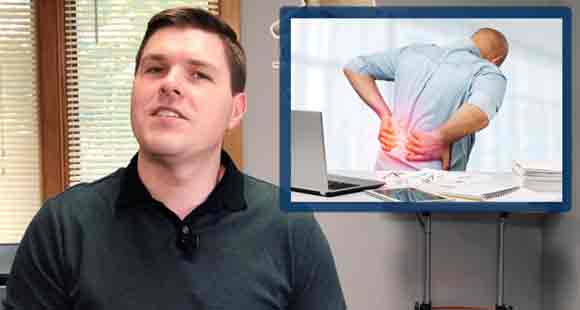
Lower back pain is a symptom that is felt in the lower part of a person. It can be caused by many things, such as a minor strain to a serious medical condition.
When muscle in the lower back become strained and take on more stress than they can handle, pain is usually the first sign of an injury.
This can be caused by lifting something too heavy or performing a workout with improper form.
The symptoms of chronic pain may include pain or discomfort in your lower back, buttocks, and hip areas. Lower back pain symptoms may also include tightness, weakness, and stiffness.
For most people, these symptoms can be easily treated. However, symptoms that are more serious may also include symptoms in your legs or feet.
Lower Back Pain: When Is It Serious?
It’s important to know when lower back pain is serious condition and not just an annoying symptom of something else. If symptoms persist, you should consult your doctor. Here are some symptoms that might indicate spinal stenosis:
Constant Severe Chronic Low Back Pain
Severe chronic back pain is serious and can be a sign of many different conditions, including slipped disks, degenerative platter disease, spine stenosis, and injury.
Tingling, Numbness in the Legs And Feet
If you are experiencing tingling or numbness symptoms in your leg or feet, it may mean that your symptoms have spread from the lower back. This happens most commonly in people who are experiencing symptoms for longer periods of time.
Pain That Radiates from the Person
Pain that radiates from the body can be a sign of a serious condition known as spine stenosis.
Spinal stenosis is often caused by wear and tear on the spinal cord, and symptoms include symptoms such as severe chronic pain, tingling, and numbness in the legs or feet.
Pain That Only Worsens At Night
Pain that occurs primarily at night and decreases during the day could be symptoms of some sort of nerve damage.
Some symptoms can get better as time progresses, but symptoms that do not improve may be symptoms of a serious condition.
Excessive Pain with Coughing or Sneezing
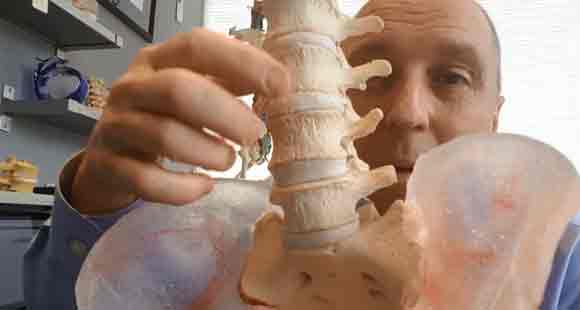
If you are experiencing a lot of pain when you stretch or cough, it’s possible you might have an issue in your discs or sciatic nerve. Don’t hesitate to get help if symptoms persist.
Pain that Worsens When Standing for Long Periods of Time
If symptoms occur when you are standing up for a long period of time, it is likely caused by pressure on your discs.
Difficulty Urinating
If you’re having difficulty urinating, this is a sign that something could be wrong with your urinary tract or kidneys.
It is often caused by a herniated disk or spine stenosis. Your symptoms may be relieved by lying down on your back in a position of comfort.
A Numb Groin or Gluteal Area
One of the symptoms that can accompany lower back pain is numbness in the groin or gluteal area. This may be the symptoms of a nerve being compressed, which usually means you should consult a doctor.
Consult Your Doctor If Symptoms Persist
It’s important to understand when lower back pain is serious and when symptoms are normal so you can ensure a quick recovery.
Always consult your doctor for symptoms that last for more than two weeks.
Common causes of lower back pain include:
i) Lifting heavy objects that are not properly grasped by the hands
ii) Sitting too long in one position. Specifically, sitting on hard surfaces for a long period of time.
iii) Lifting something that is too heavy for you and trying to set it down without losing your balance.
iv) Participating in extreme sports which can involve heavy petting, steep terrain, etc.
v) Exercising too much without properly stretching first and taking breaks between sessions to rest.
vi) Stress can affect your brain, resulting in strength spasms in the low back area. The spine is especially prone to these spasms.
Minor or acute Lower Back Pain can be Caused by:
Bad Posture
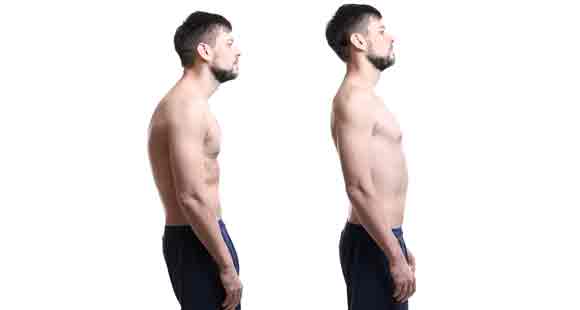
Bad posture, probably one of the more common causes for minor chronic pain, comes from slouching.
Children are often told to "sit up straight!" because it has been proven to help with this problem. People who have bad posture often feel tightness and stiffness in their neck, back and shoulders.
One of the reasons people develop bad posture is because of certain habits people may have that are not necessarily dangerous themselves, such as reading on a tablet or phone while lying down, or spending hours per day at a desk looking down at papers or computer screen while being seated.
These habits may not seem harmful but they can lead to other issues such as improper physical alignment which can, in turn, stem from improperly positioned cushions that cause the spine to be held in an awkward position for extended periods of time.
Long Periods of Sitting
Sitting too long in one position can cause lower back pain. Specifically, sitting on hard surfaces for a long period of time.
People who have chronic low back pain typically experience discomfort when excessive pressure is put on the back (e.g., from sitting).
The load of the body causes the cushioning of the buttocks and thighs to compress, putting additional stress on platter in between the backbone.
Sitting for too long can lead to more serious problems like sciatica, arthritis, or disc herniation.
Overconsumption of Alcohol, Illicit Drugs, and/or Smoking Cigarettes
i) Alcohol, illicit drugs, and smoking cigarettes can lead to a lack of proper muscular development and can cause chronic back pain.
ii) Individuals who have used these substances for years have an increased risk of developing severe chronic back pain.
iii) Smoking may lead to low back pain by over-stretching the spine muscle and ligaments that are in charge of supporting the spine's natural curvature.
iv) Drugs or alcohol abuse may also lead to an increased number of muscle spasms. These spasms often happen as a response to potential injury in order to prevent further injury from happening.
Getting Into A Car Accident And/Or Falling Down
Getting into a car accident and/or falling down for lower back pain can also be a potential cause of chronic back pain. Car accidents and falls may result in broken bones, cuts, bruises, head injuries, or other serious injuries. Go for an X-ray if you feel uncomfortable.
This injury may not be seen immediately after the accident occurs but may manifest weeks later as chronic back pain is serious.
Another Cause of Lower Back Pain is:
Over the Age Of 60 Years
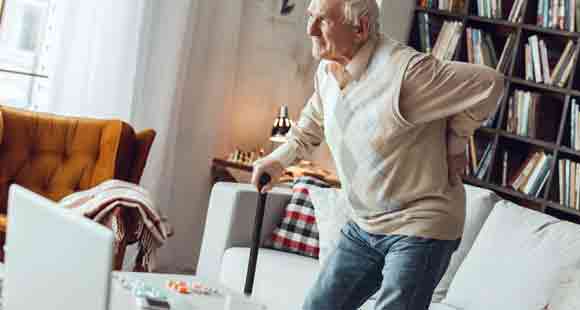
Men over the age of 60 years old, who are overweight and suffer from diabetes have a higher rate of contribute to back pain.
Research has shown that approximately 33% of men over 60 have experienced lower back pain at some point in their lives due to degeneration or loss of skeletal muscle mass.
Pregnancy And Delivery
During pregnancy, women's bodies experience a variety of changes as their baby grows inside of them.
Some of these changes include an increased amount of blood circulation to the pelvis, which can lead to lower back pain or discomfort during pregnancy for some women.
Another factor contributing to increased lower back pain during pregnancy could be attributed to the rapid load gain experienced by many women.
How can I Prevent Low Back Pain?
Those who do have lower back pain, before considering surgery:
1) Stretch
The most important thing you can do for yourself is to get moving and start stretching the muscle of your back. Stretch your back gently a few times a day in different ways.
Start by standing up tall and trying to reach down to touch your toes. After you do this, gently stretch your back by drawing one knee up towards your chest. Hold it for a few seconds and then repeat on the other side.
Two more great ways to get started are by using a yoga ball and doing trunk rotations or doing straight leg lifts while lying on your back with knees bent.
2) Medication
There are a number of medications on the market that have been approved by the FDA for treating lower back pain. If you suffer from extreme lower back pain, talk to your doctor about medication options.
3) Heat and Cold
Applying heat or cold to an injured area can decrease inflammation in muscle and tissues resulting from spasms, strains, and sprains.
Heat is typically used before the activity to loosen and relax tissues, while cold is usually added afterward to relieve pain and swelling.
It's a good idea to use ice for no more than 20 minutes at a time due to potential side effects
4) Set Realistic Goals
If you're experiencing back pain that limits your ability to stand or walk upright, talk with your doctor about setting realistic goals for yourself.
For example, reducing the amount of time spent sitting in a chair each day or getting off of your feet when you start to feel pain.
FAQs
There are many causes, symptoms, and treatments for lower back pain. Keep reading to find the answers to common frequently asked questions about lower back pain.
01. What are the Risk Factors for Back Pain?
Answer: Some of the risk factors for back pain are:
Lack of exercise
A high BMI
Obesity
Sitting or standing for long periods of time
An occupation that requires a lot of lifting and/or standing
Medical conditions such as arthritis, osteoporosis, and scoliosis
02. In what Conditions May Spinal Curvature Lead to Back Pain?
Answer: The spinal curvature may lead to back pain when it makes the vertebrae in the spine improperly aligned which results in an individual having a poorly positioned spine.
This in turn can cause muscle stress and strain. A good example of this is the case that a person has scoliosis.
Scoliosis is a condition that results in an abnormal curvature of the spine. It can occur either from birth or develop during childhood and adolescence.
Scoliosis can be idiopathic, meaning it occurs without cause, or secondary, which means it is caused by environmental factors such as smoking.
03. Should You See A Doctor If You're Having Back Pain?
Answer: Yes, it's important to see a doctor if you're experiencing cauda equina syndrome with pain.
There are many reasons for back pain and treatments differ depending on the causes.
It is important to have your back checked by a professional to determine what the cause of your back pain is and how best to treat it.
04. What's the Success Rate of Surgery for Low Back Pain?
Answer: It is difficult to determine the success rate of surgery for low back pain because there are many different types of surgeries that can be performed on the spine.
Some of these surgeries have a higher success rate than others. It is also difficult to put a percentage on this because not every individual who has low back surgery is guaranteed a successful outcome.
The overall success rate of surgery for acute low back pain may vary depending on the type of operation, the specific procedure being performed, and what type of condition needs to be addressed.
Surgery is not the only option for treating low back pain. If you're experiencing back pain, it's important to see your physical therapy doctor find out what the cause may be and how best to treat it.
Other treatments such as heat, cold, stretching, medication, or new goals can provide temporary relief from back pain rather than resorting to surgery.
05. Slipped Disc, Bulging Disc, Ruptured Disc, Herniated Disc, What's The Difference?
Answer: Slipped disc: This occurs when a disc loses its place between two vertebrae.
Bulging disc: The spinal disc can bulge out due to injury or disease.
Ruptured disk and herniated disc: These both result in a leaking of the material that normally fills and supports the center of the disc.
Herniated disc occur mostly in the lower back as opposed to ruptured disks which are more common in the neck and upper back area.
06. Is Losing Weight Going to Help My Back Pain?
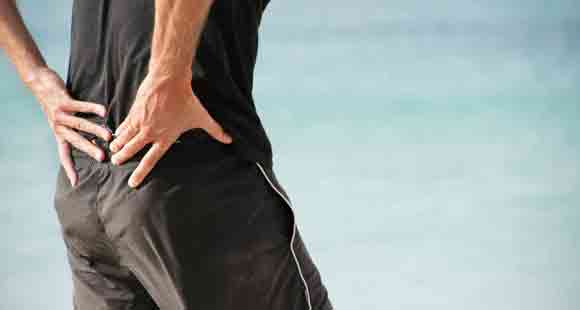
Answer: It depends. You shouldn't attempt to slim down without a doctor telling you it's safe because if you have osteoporosis or another medical condition that is causing your back pain, weight loss will only put more strain on your joints.
Losing weight can help relieve some types of back pain, but it won't help if you have nerve pain such as sciatica.
Overall though, burning fat will take the stress off of your joints and help keep them healthy. It's important to note that losing just a few pounds can make a big difference in how much stress is placed on your joints.
07. What Vitamins Will Help My Back Pain?
Answer: Certain vitamins may help with back pain in some people.
Some of these include vitamins B6, C, and D.
The most common ways that these vitamins provide relief are by reducing inflammation and helping the body eliminate toxins.
Vitamin B6 helps regulate muscle contractions while vitamin C improves the effects of vitamin E. Vitamin D has anti-inflammatory properties.
08. How Can I Naturally Treat My Back Pain?
Answer: There are many different ways to naturally treat back pain. Some of these include:
Massaging the painful area
Taking non-steroidal anti-inflammatory drugs (NSAIDs)
Using a heating pad or ice pack on the affected area
Eating a healthy diet, exercising regularly, and managing body’s fat to reduce stress on the back.
Last words
Lower back pain is a common ailment that many people experience at one point or another in their lives.
Knowing the difference between serious and less severe lower back pain will help you know when to seek medical attention, as well as what symptoms are more likely to be caused by something serious like cancer or an infection.
With this blog post, we’ve covered some of the most telling signs your lower back pain may not just be due to over-exertion or stress but rather something much worse.
Take note of these points for future reference so you can decide if it might be time to see a physical therapy doctor about your low back pain!
